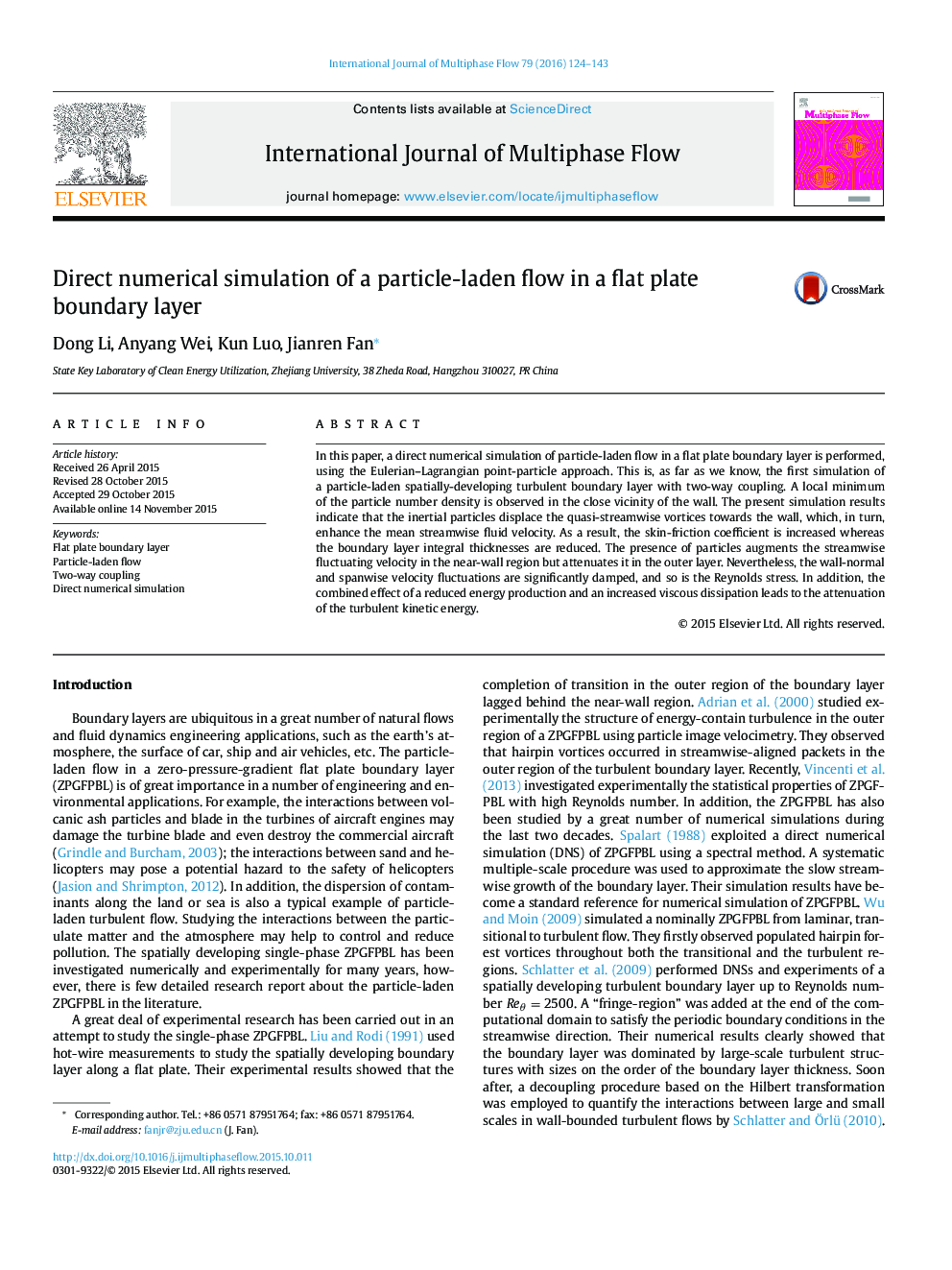| Article ID | Journal | Published Year | Pages | File Type |
|---|---|---|---|---|
| 667061 | International Journal of Multiphase Flow | 2016 | 20 Pages |
•A direct numerical simulation of particle-laden flow is performed.•The inertial particles displace the quasi-streamwise vortices towards the wall.•The particles increase the mean skin-friction coefficient.•The particles augment the streamwise fluctuating velocity in the near-wall region.•The wall-normal and spanwise velocity fluctuations are significantly damped.
In this paper, a direct numerical simulation of particle-laden flow in a flat plate boundary layer is performed, using the Eulerian–Lagrangian point-particle approach. This is, as far as we know, the first simulation of a particle-laden spatially-developing turbulent boundary layer with two-way coupling. A local minimum of the particle number density is observed in the close vicinity of the wall. The present simulation results indicate that the inertial particles displace the quasi-streamwise vortices towards the wall, which, in turn, enhance the mean streamwise fluid velocity. As a result, the skin-friction coefficient is increased whereas the boundary layer integral thicknesses are reduced. The presence of particles augments the streamwise fluctuating velocity in the near-wall region but attenuates it in the outer layer. Nevertheless, the wall-normal and spanwise velocity fluctuations are significantly damped, and so is the Reynolds stress. In addition, the combined effect of a reduced energy production and an increased viscous dissipation leads to the attenuation of the turbulent kinetic energy.
Graphical abstractFigure optionsDownload full-size imageDownload as PowerPoint slide
